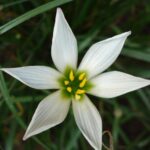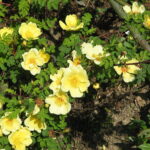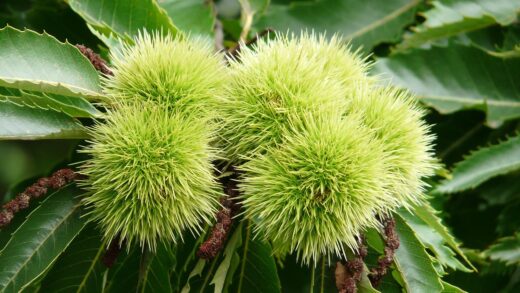Planting and propagating the rosy primrose

Successfully establishing rosy primrose in your garden begins with a proper understanding of its planting requirements, which are intrinsically linked to its native Himalayan habitat. This is a plant that craves cool, moist conditions and a soil rich in organic matter, so replicating this environment is the first and most crucial step. The ideal time for planting is either in early spring or early autumn, as this allows the plant to settle in and establish its root system during cooler, wetter weather, avoiding the stress of summer heat and drought. When you first acquire your plants, whether as container-grown specimens or bare-root divisions, it is important to get them into the ground as quickly as possible to prevent their delicate roots from drying out. Proper planting is not just about digging a hole; it’s about creating a welcoming home that will support the plant’s long-term health and spectacular spring display.
The process of preparing the planting site is paramount. Before you even think about placing the plant in the ground, take the time to thoroughly amend the soil. Rosy primroses thrive in a humus-rich, moisture-retentive medium, so work in generous amounts of well-rotted compost, leaf mold, or aged manure. This not only enriches the soil with essential nutrients but, more importantly, it improves its structure, enabling it to hold the consistent moisture these plants demand while still allowing for adequate drainage. Aim for a soil texture that is friable and spongy, capable of staying damp without becoming a waterlogged bog.
When you are ready to plant, dig a hole that is roughly twice the width of the plant’s root ball and just as deep. Gently remove the primrose from its pot, being careful to tease out any circling roots to encourage them to grow outwards into the new soil. Place the plant in the hole so that the crown—the point where the leaves emerge from the roots—is level with the surrounding soil surface. Planting too deeply can lead to crown rot, a fatal condition for primroses, while planting too high can cause the roots to dry out.
After positioning the plant correctly, backfill the hole with the amended soil, firming it gently around the root ball to eliminate any large air pockets. Once the plant is securely in place, water it in thoroughly and deeply. This initial watering is critical as it helps to settle the soil around the roots and provides the immediate moisture the plant needs to begin establishing itself. Following planting, applying a layer of organic mulch around the plant will help conserve moisture, regulate soil temperature, and suppress competing weeds, giving your new rosy primrose the best possible start in its new location.
Selecting the right site
Choosing the perfect location is a foundational step in successfully cultivating rosy primrose. These plants have specific light and moisture requirements that must be met for them to flourish. An ideal site will offer partial or dappled shade, which protects the plants from the intense heat and scorching rays of the afternoon sun. Locations under the high canopy of deciduous trees, in a north or east-facing border, or in a woodland garden setting are often perfect, as they provide bright, indirect light without direct solar stress. Full sun, especially in warmer climates, will lead to withered leaves and a short-lived floral display.
More articles on this topic
The most critical factor in site selection is moisture. Rosy primroses are native to alpine meadows and stream banks, and they demand consistently damp soil. Therefore, the best garden locations are those that naturally retain moisture, such as low-lying areas, the margins of a pond or water feature, or in a dedicated bog garden. If you do not have a naturally damp area, you must be prepared to provide regular and consistent irrigation. When assessing a potential site, check the soil after a period without rain; if it is bone dry, it may be an unsuitable location unless you are committed to a rigorous watering schedule.
Consider the soil composition of your chosen site. While you can and should amend the soil before planting, starting with a base that is inherently suitable will make your job much easier. A soil that is naturally loamy or has a good clay content will hold moisture better than a very sandy soil. You can perform a simple test by squeezing a handful of moist soil; if it forms a loose ball that crumbles easily, it likely has good structure. If it is hard and compacted or falls apart like sand, significant amendment with organic matter will be necessary to create the required humus-rich, moisture-retentive conditions.
Finally, think about the plant’s companions and the overall garden design. Rosy primroses are relatively compact, clump-forming perennials, making them excellent for the front of a border or for planting in groups to create a swath of early spring color. They combine beautifully with other moisture-loving, shade-tolerant plants like hostas, ferns, astilbes, and hellebores. Ensure the chosen site provides enough space for the clumps to mature and is not in the path of aggressive, fast-spreading plants that could overwhelm them and compete for resources.
Propagation by division
Division is the most common, reliable, and effective method for propagating rosy primrose. This process not only allows you to increase your stock of plants for free but also serves to rejuvenate older, established clumps that may have become congested and less floriferous over time. The ideal time to divide rosy primroses is in late summer or early autumn, after the plant has finished its active growth for the season but while the soil is still warm enough to encourage new root development before winter. Dividing every three to four years is a good general rule to maintain plant vigor.
More articles on this topic
To begin the process, carefully lift the entire clump out of the ground using a garden fork or spade, taking care to dig wide enough to avoid damaging the root system. Once the clump is lifted, gently shake or wash off the excess soil so that you can clearly see the structure of the crowns and roots. This will make it much easier to identify the natural division points. An established clump will consist of multiple crowns, each with its own set of roots and leaves (or leaf buds).
Using your hands, a sharp knife, or two garden forks placed back-to-back, carefully separate the large clump into smaller sections. Each new division should have at least one healthy crown and a good portion of the root system attached. Aim to create divisions that are not too small, as larger sections will establish more quickly and are more likely to flower in the following spring. Discard any old, woody, or non-productive parts from the center of the original clump, retaining only the healthy, vigorous outer sections.
Once you have your new divisions, it is important to replant them as quickly as possible to prevent the roots from drying out. Plant them at the same depth they were previously growing, in a well-prepared site with amended, moisture-retentive soil. Water the newly planted divisions thoroughly to settle the soil around the roots and continue to keep them well-watered as they establish. With proper care, these new plants will quickly develop into strong, healthy clumps, ready to provide a stunning display of color the next spring.
Propagation from seed
Growing rosy primrose from seed can be a highly rewarding, albeit more challenging, method of propagation compared to division. It allows you to produce a large number of plants relatively inexpensively, which is ideal for naturalizing an area. For the best germination rates, it is recommended to use fresh seed, as primrose seed viability can decline over time. You can either purchase seeds from a reputable supplier or collect your own from established plants once the seed capsules have turned brown and started to split open.
The key to successfully germinating rosy primrose seeds is a process called cold stratification. In their natural habitat, the seeds undergo a period of cold, moist conditions during winter, which is necessary to break their dormancy. To replicate this, sow the seeds in late autumn or early winter in pots or trays filled with a fine-textured, sterile seed-starting mix. Lightly cover the seeds with a thin layer of grit or vermiculite, water gently, and then place the container in a cold frame, a sheltered spot outdoors, or in a refrigerator for a period of 4 to 6 weeks.
After the cold stratification period, move the container to a location with bright, indirect light and a cool temperature, ideally around 10-15°C (50-60°F). Germination can be erratic and may take anywhere from a few weeks to several months, so patience is essential. Throughout this time, it is crucial to keep the compost consistently moist but not waterlogged; using a fine rose on a watering can or misting the surface can prevent dislodging the delicate seeds. Ensure good air circulation to prevent fungal diseases like damping-off.
Once the seedlings have emerged and developed their first true set of leaves, they can be carefully pricked out and transplanted into individual small pots or module trays. Use a high-quality potting mix and continue to grow them on in a cool, bright location, protecting them from direct sun and frost. The young plants can be gradually hardened off and planted out into their final garden positions in the spring or autumn once they are large enough to handle. Be aware that plants grown from seed may not flower in their first year, but will reward your effort with a beautiful display in their second season.
















